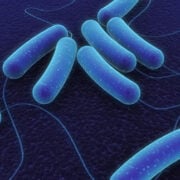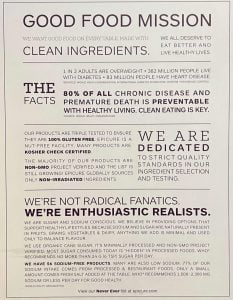Scientists Unravel New Potential Risk Factor for Celiac Disease
“We don’t know why only a fraction of individuals with genetic risk factors for celiac disease actually become gluten intolerant,”
Peter Green, MD
March 31, 2016 – Study Discovers Link Between Celiac Disease Risk and a Noncoding RNA, Columbia University Medical Centre Newsroom(1)
Researchers have identified a segment of RNA that, when suppressed, may contribute to the intestinal inflammation that occurs in people with celiac disease. The findings point to a possible new risk factor for celiac disease. ‘Ribonucleic acid (RNA) is a molecule plays a role in the coding, decoding, regulation, and expression of genes.’ (2)
Celiac disease is an autoimmune digestive disorder in which genetically predisposed individuals develop an immune response to gluten, a protein found in cereal grains, wheat, rye and barley. An estimated 40 percent of the population has the gene variants associated with celiac disease, but only 1 percent of people with these genes go on to develop intestinal inflammation and damage—the hallmarks of the disease—after ingesting gluten.
“We don’t know why only a fraction of individuals with genetic risk factors for celiac disease actually become gluten intolerant,” said Peter Green, MD, the Phyllis and Ivan Seidenberg Professor of Medicine at Columbia University Medical Center (CUMC), director of the Celiac Disease Center at Columbia University, gastroenterologist at NewYork-Presbyterian/Columbia and a lead author of the paper.
“Through the dedicated work of translational scientists, we are beginning to uncover the
mechanisms that unleash the symptoms of celiac disease and identify potential therapeutic targets.”
Previous studies have identified a number of risk genes responsible for making proteins that are associated with the disease. Recently, researchers have focused on the ability of noncoding RNA, the portion of our genome that does not contribute to the production of proteins, to regulate a variety of biological processes. Long noncoding RNA (lncRNA), which contains more than 200 nucleotides, are thought to play a role in autoimmune diseases and cancers by interacting with other RNA, DNA and proteins.
- Through a variety of experiments, the researchers demonstrated that lnc13 dampens the expression of celiac-associated genes by binding to a common family of proteins.
- They then discovered that patients with celiac disease had unusually low levels of lnc13 in their intestines, suggesting that reduced levels of this RNA may contribute to the inflammation seen in celiac disease by turning off the normal regulatory pathway.

Increased levels of inflammation seen in patients with Celiac disease correlated with reduced levels of Non-Coding RNA – and vice versa.
“These findings add an important detail to our understanding about how celiac disease develops,” Sankar Ghosh, PhD
Dr. Ghosh is Silverstein and Hutt Family Professor of Microbiology and Immunology, chairman of the Department of Microbiology and Immunology at CUMC and another lead author. “Given that the majority of the population consumes these grains, understanding the triggers for the development of celiac disease will have a broad impact.”
In future studies, we hope to investigate factors that lead to suppression of lnc13, which may cause gluten intolerance in people who were previously able to tolerate gluten.”
(1) Columbia University Medical Centre Newsroom The study was the result of a multi-institutional, multidisciplinary collaboration between the Celiac Disease Center and researchers at Columbia University’s department of Microbiology and Immunology.
(2) What is RNA?













